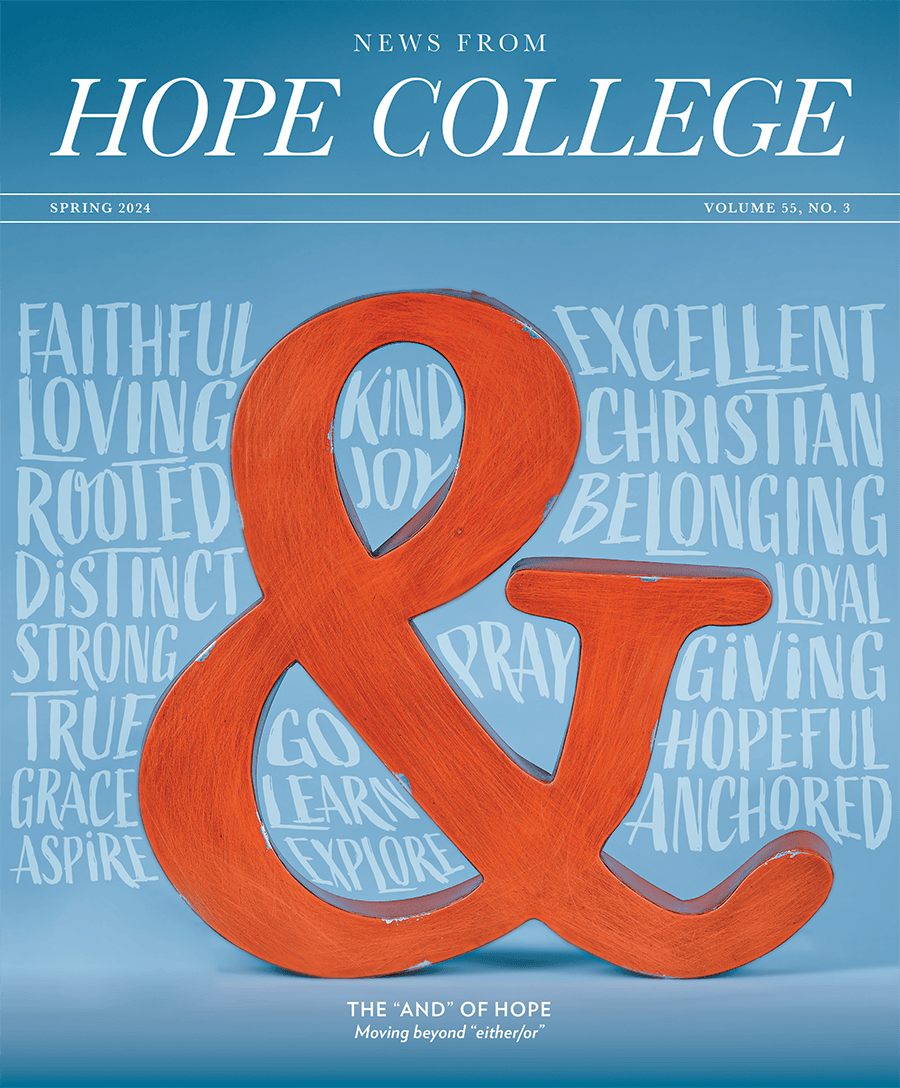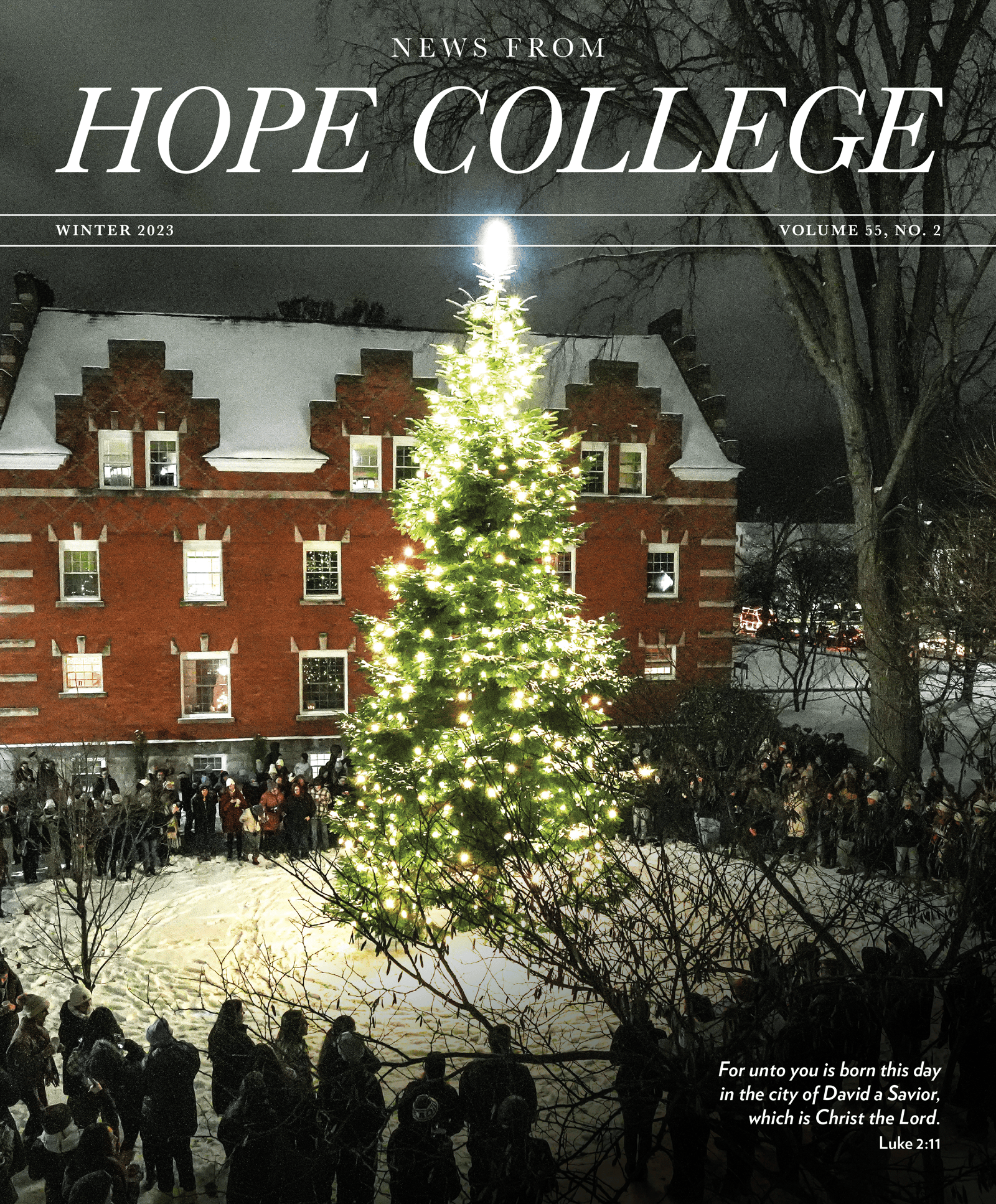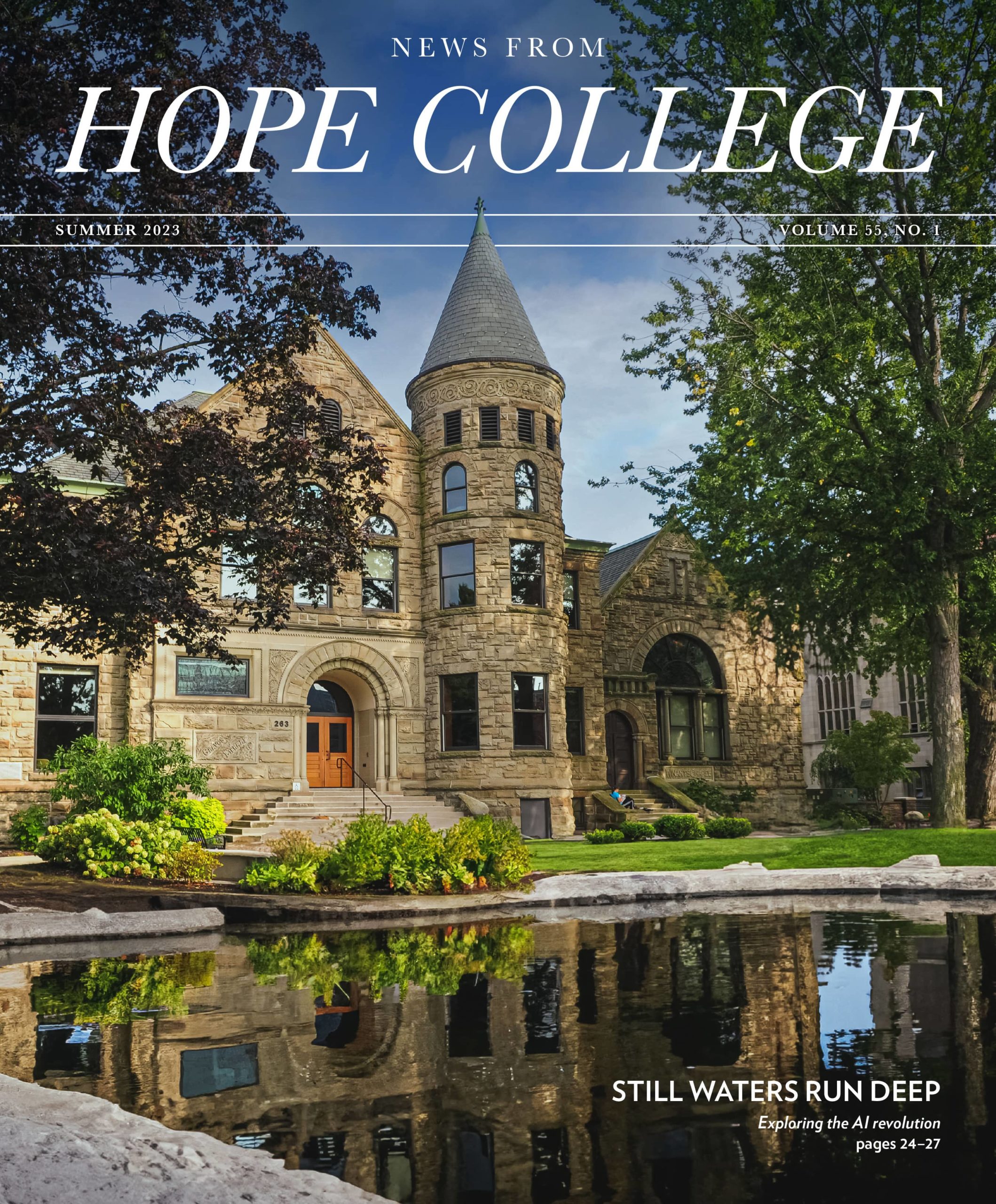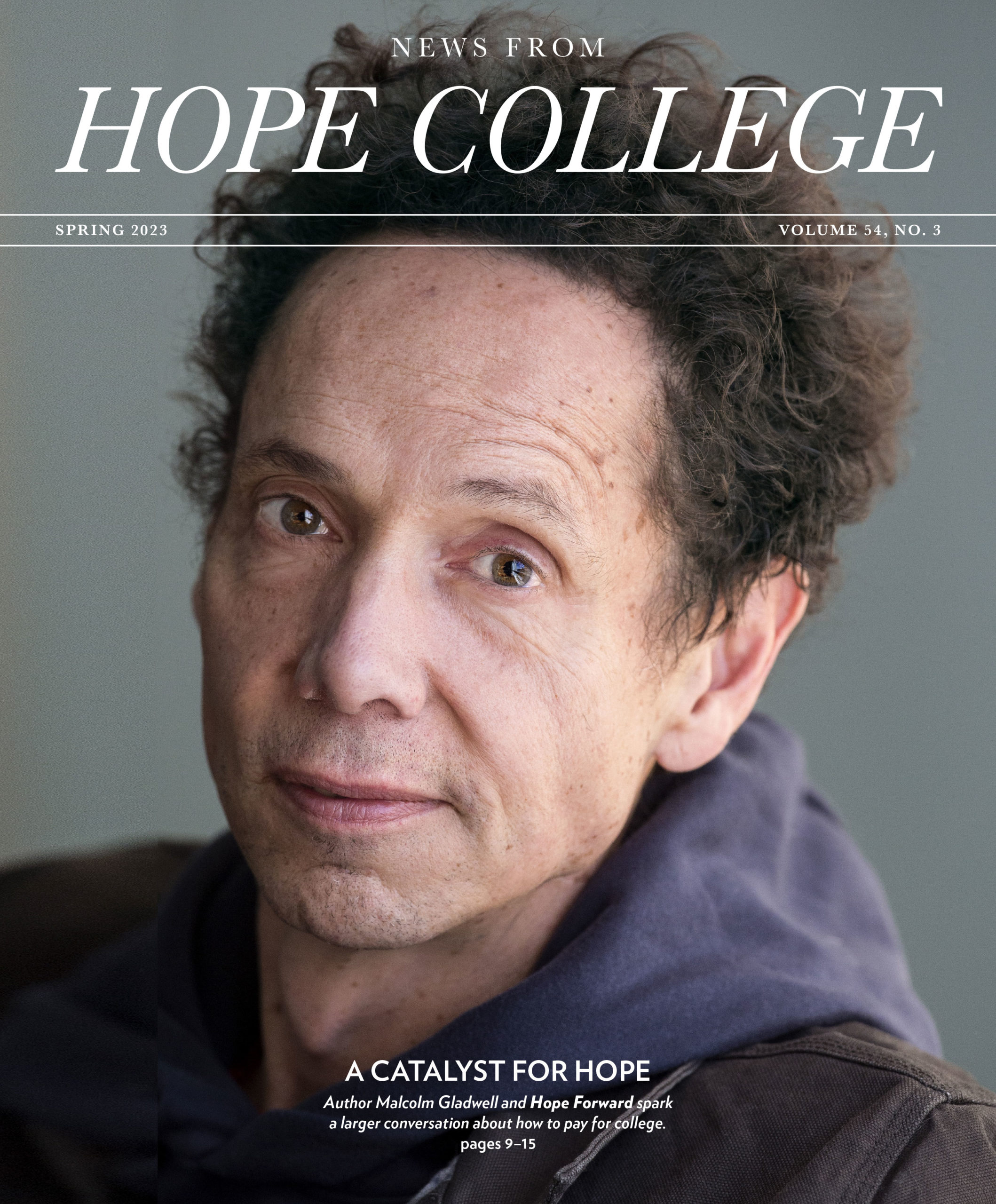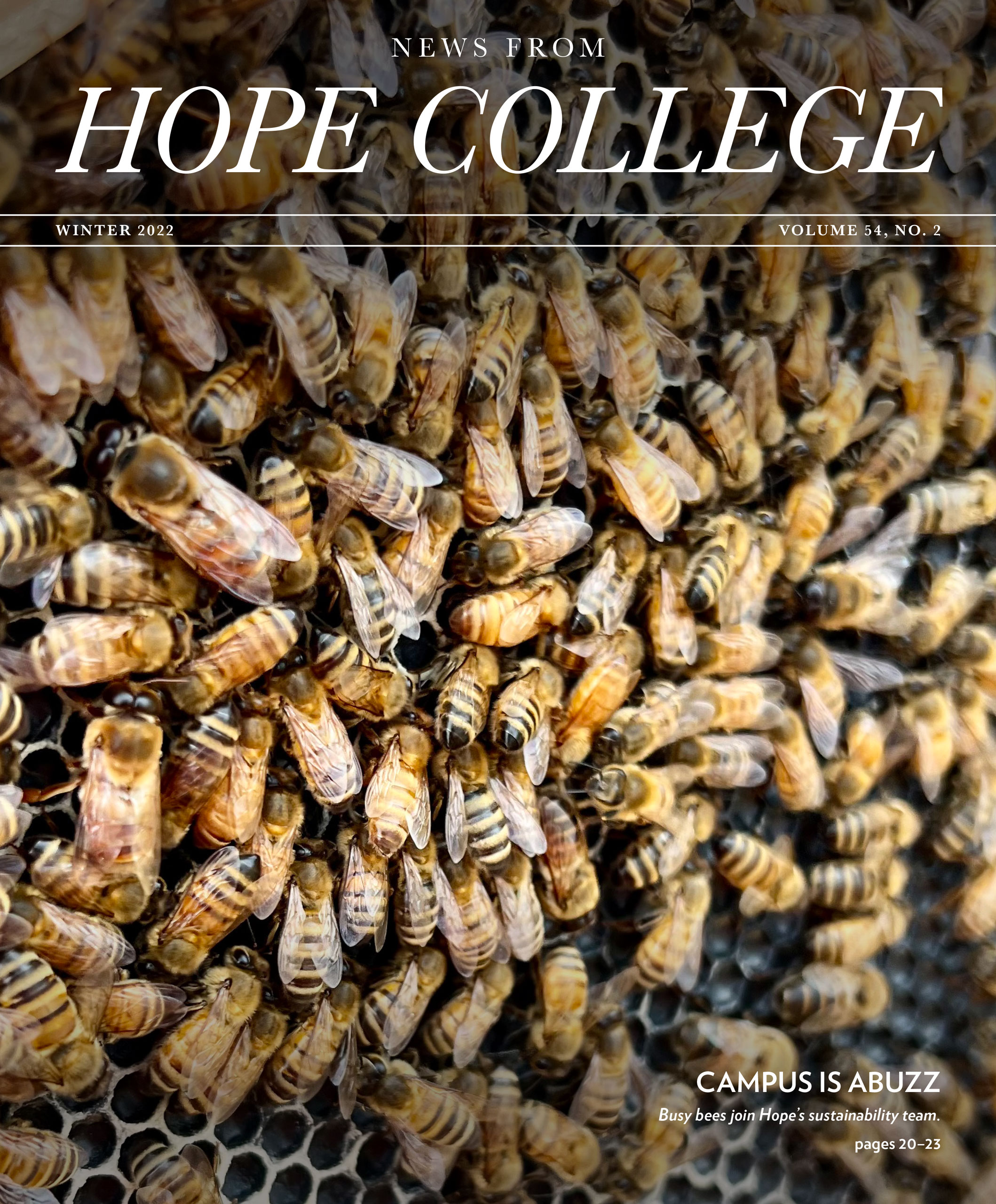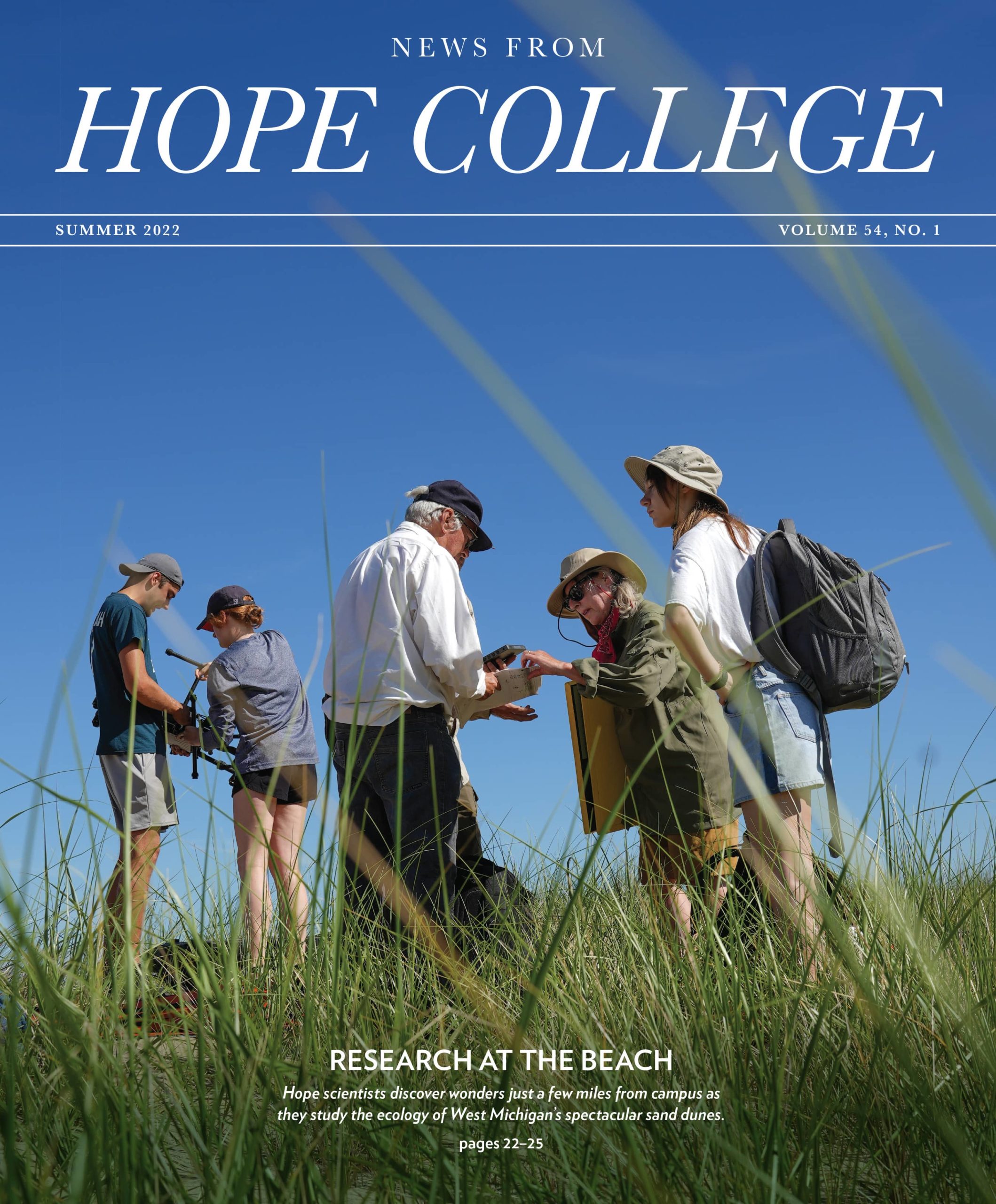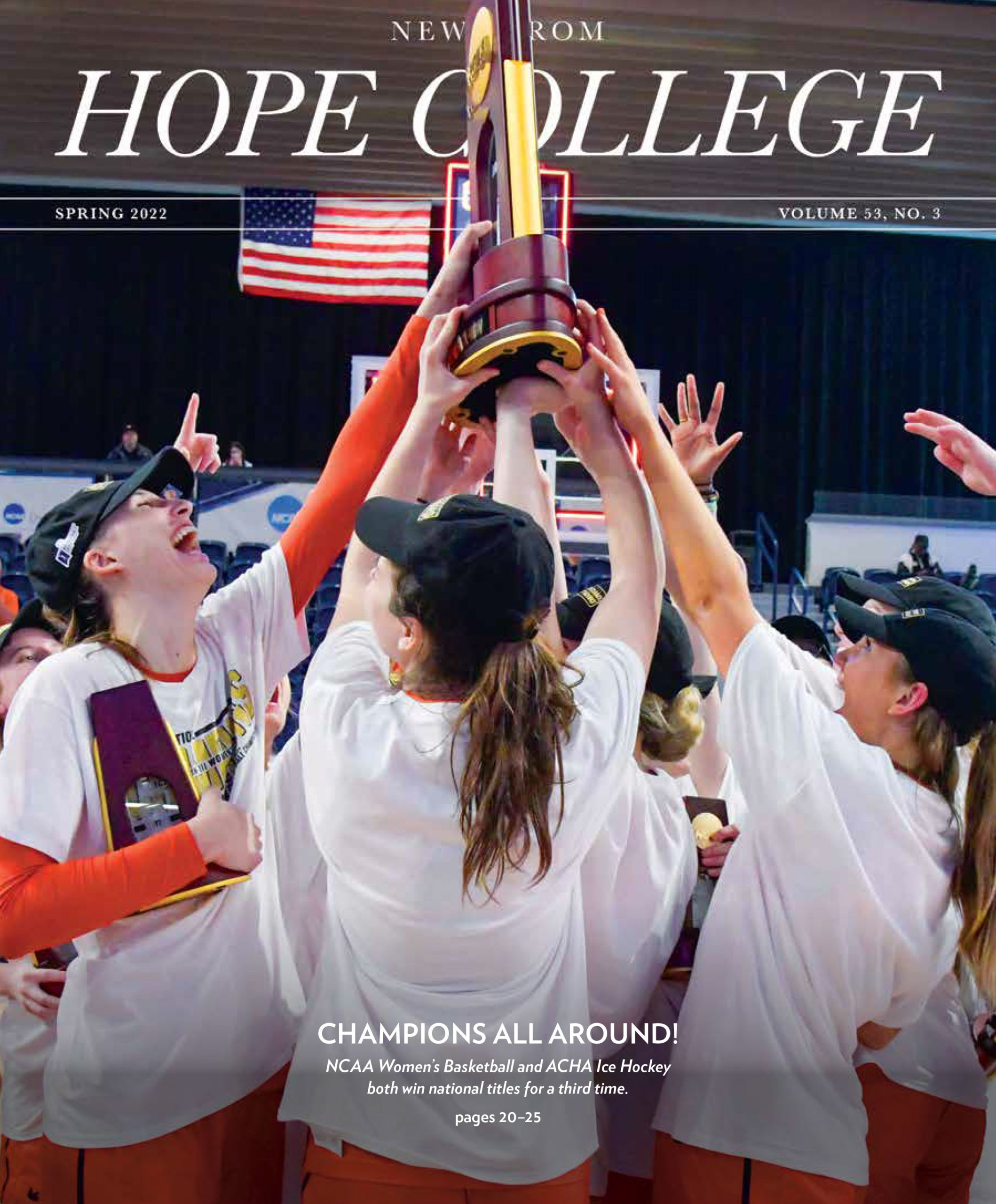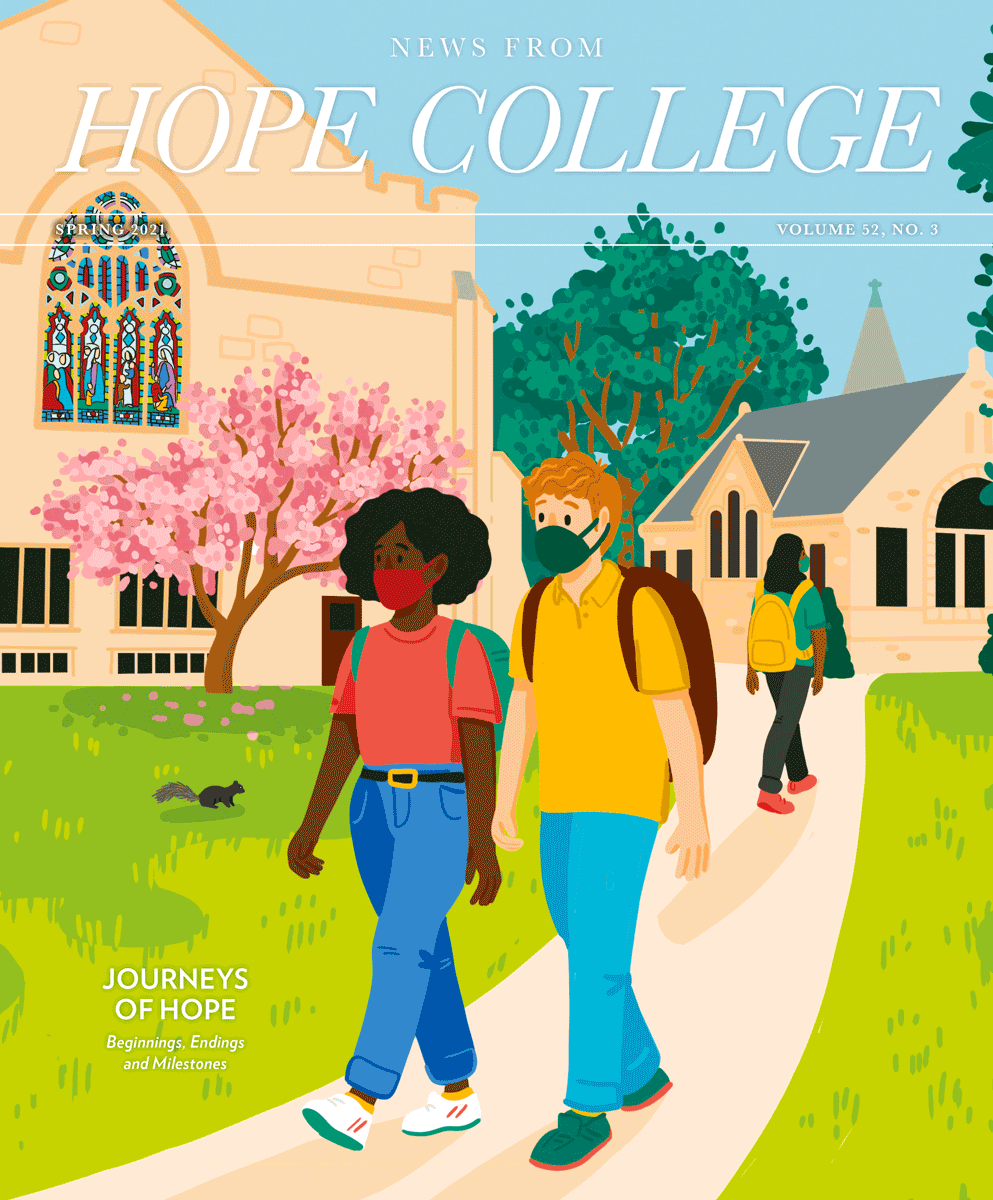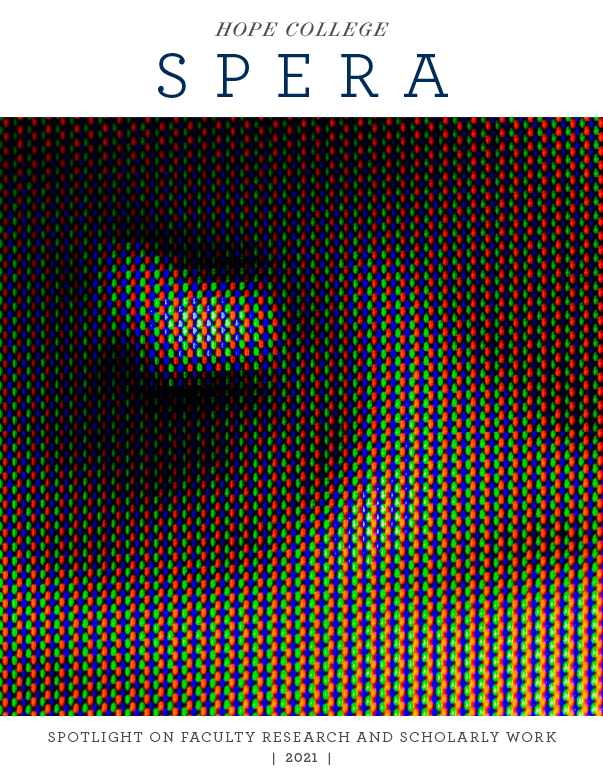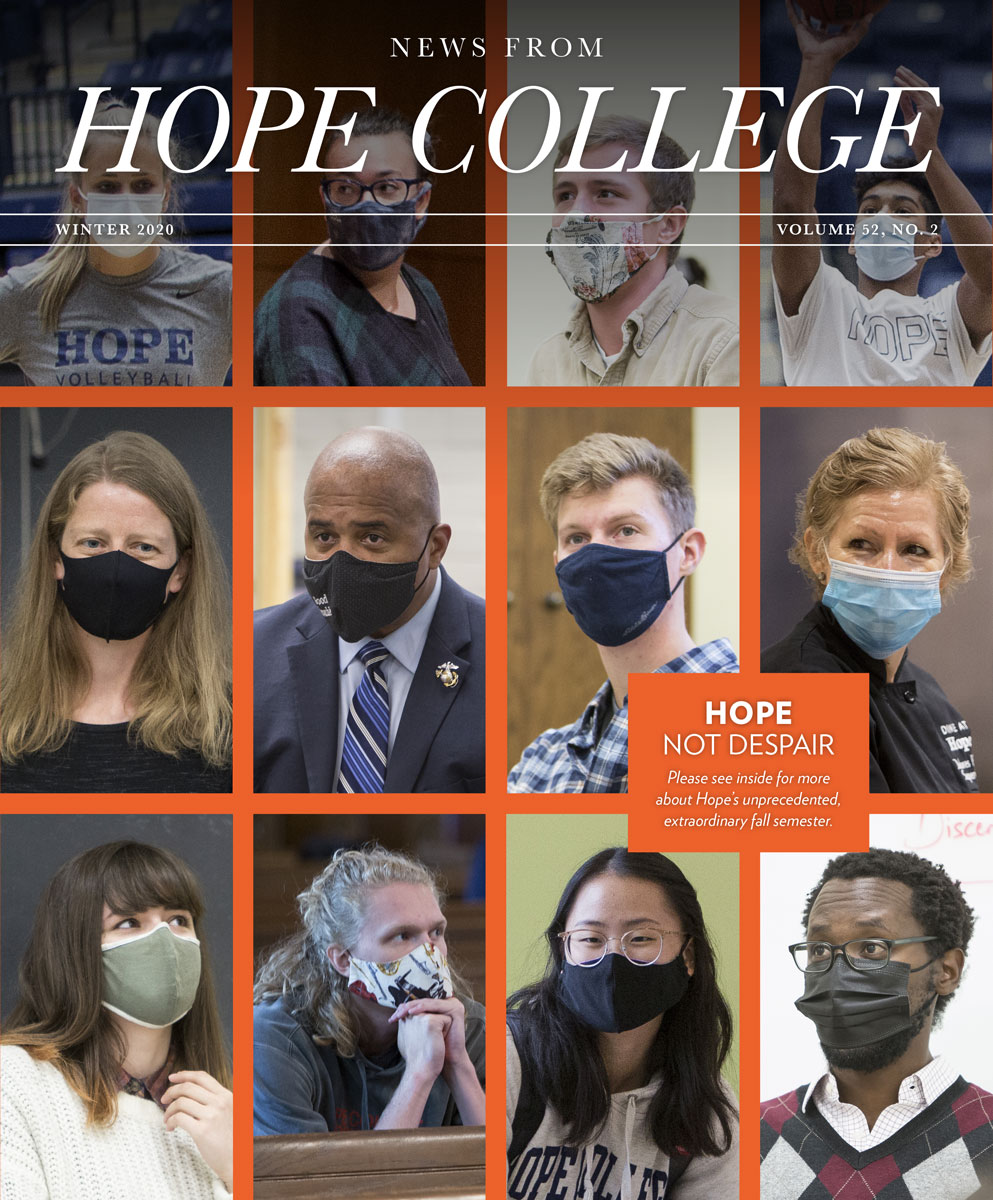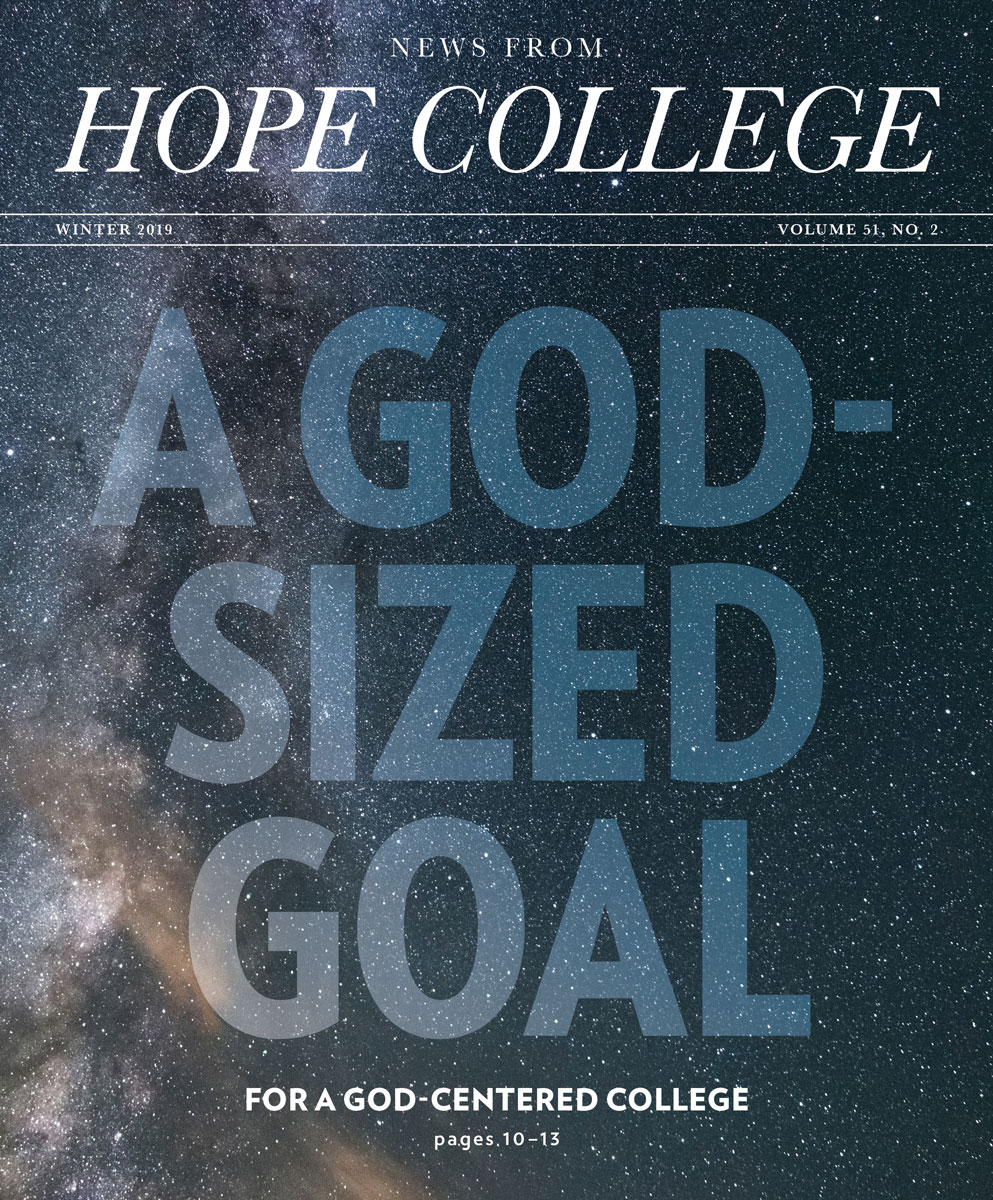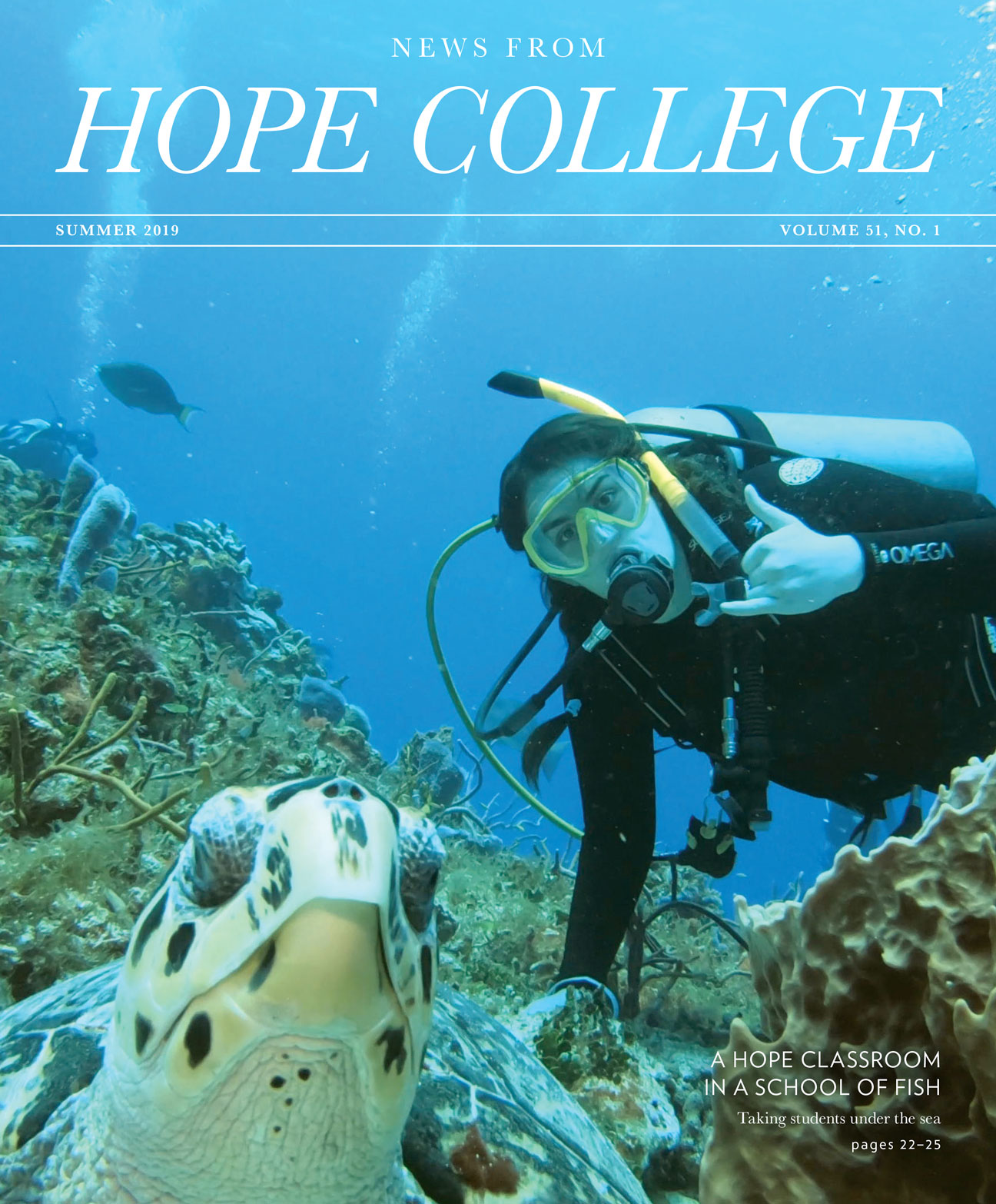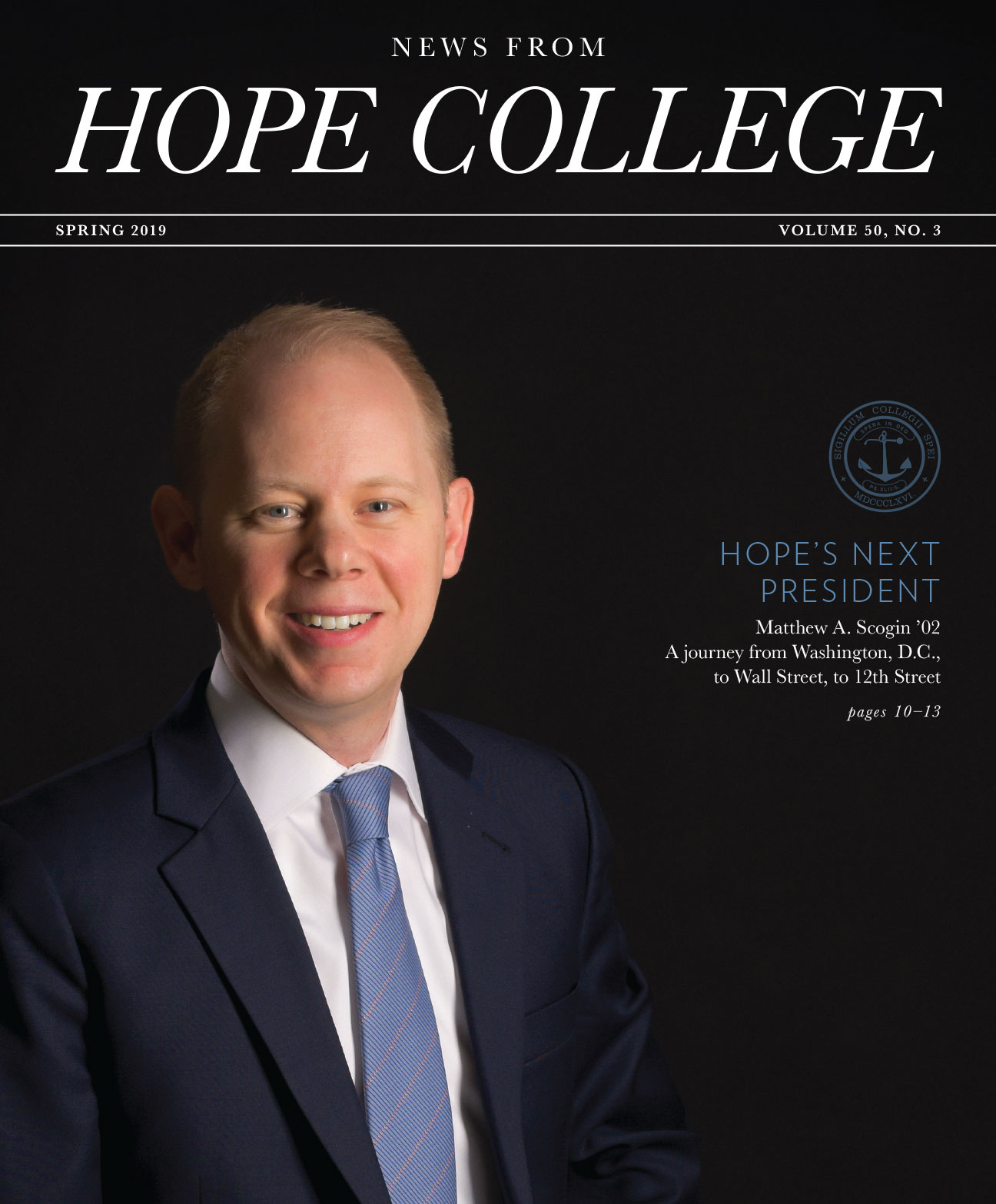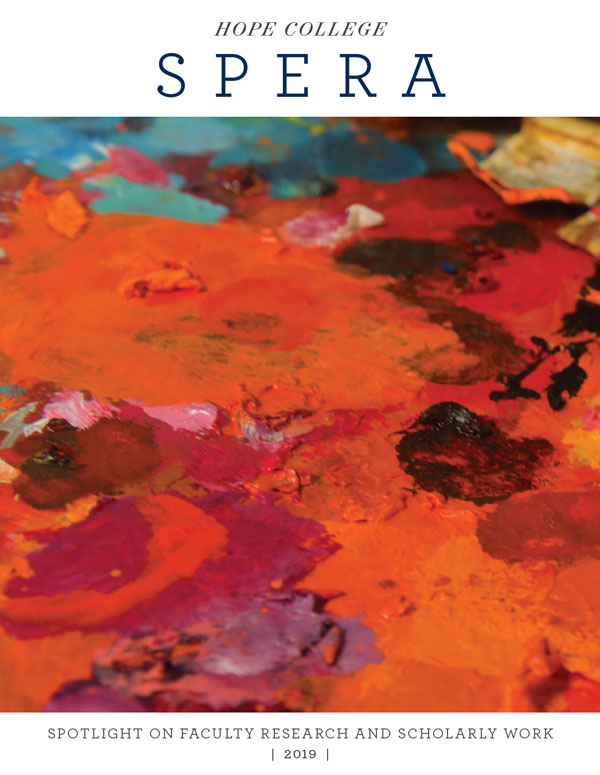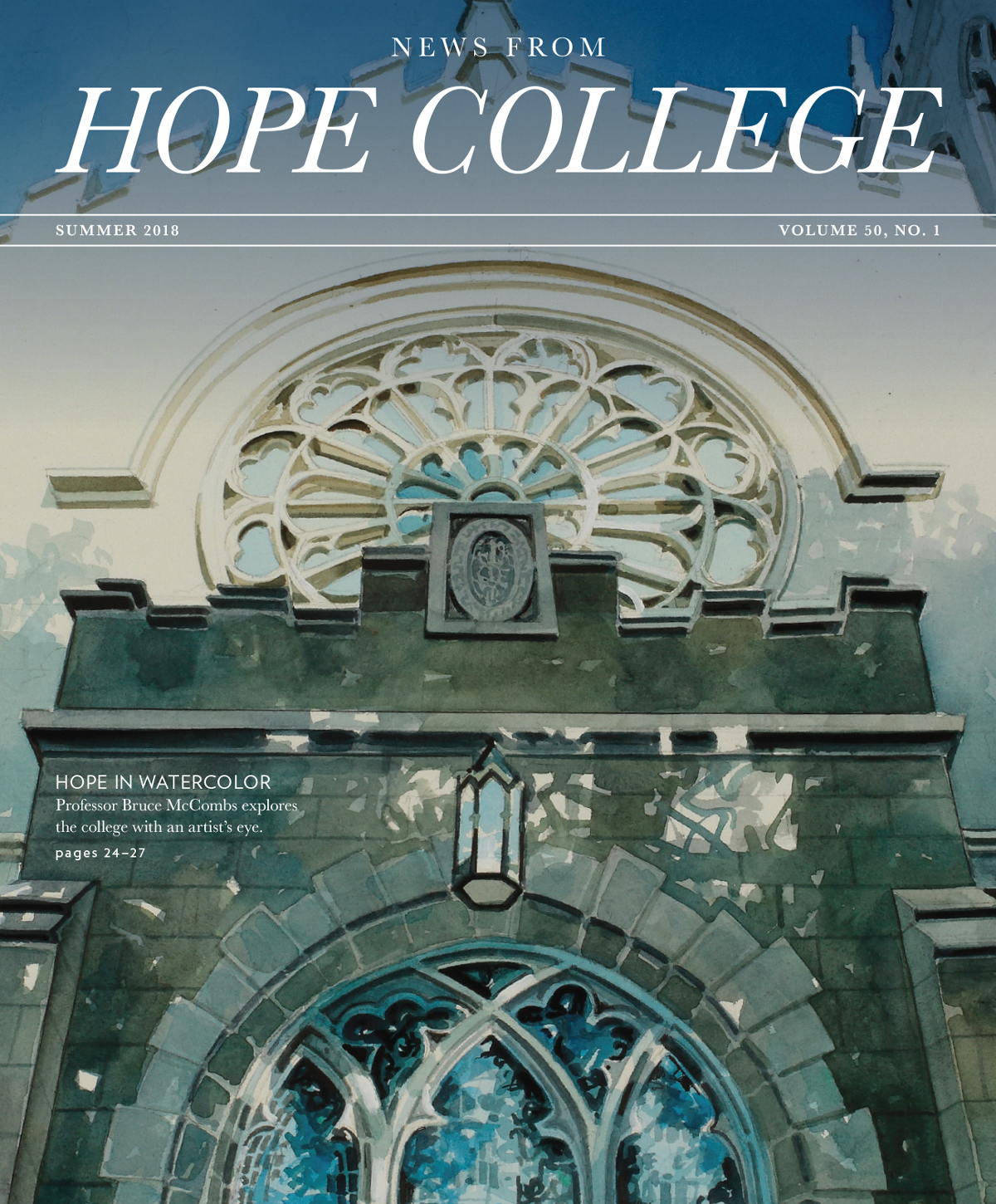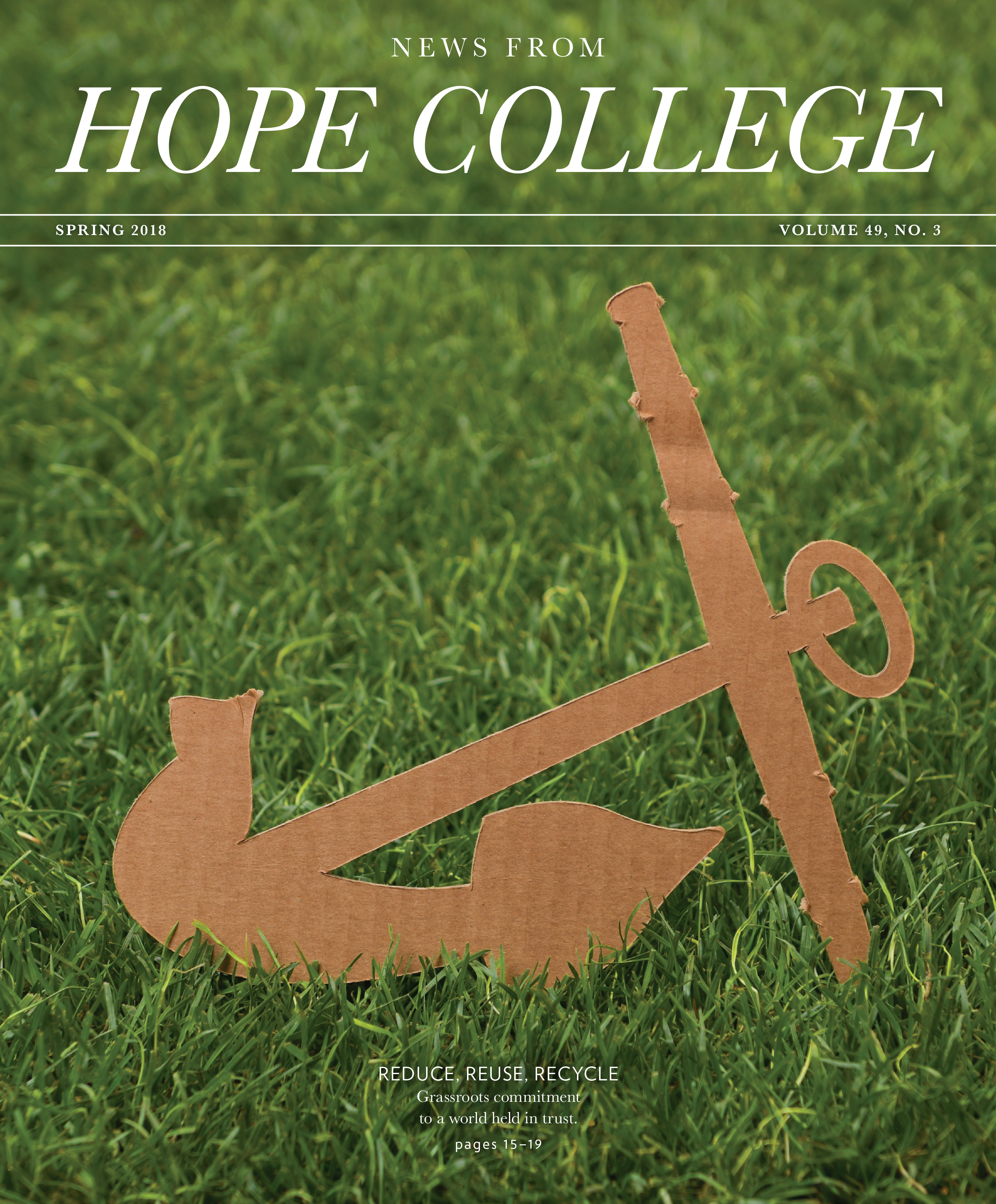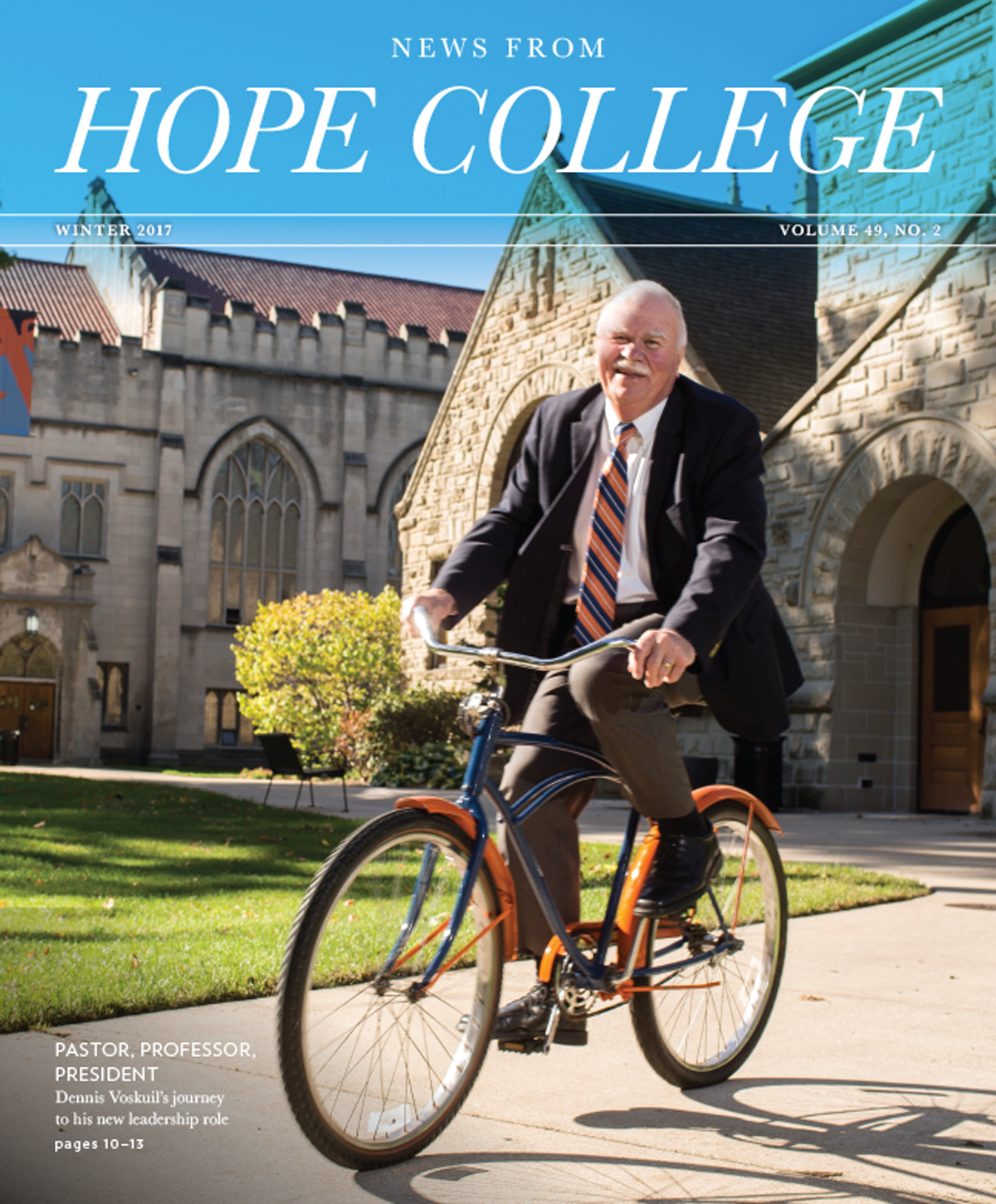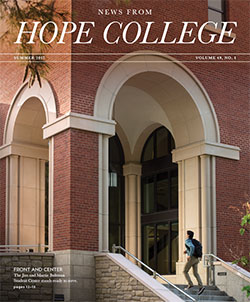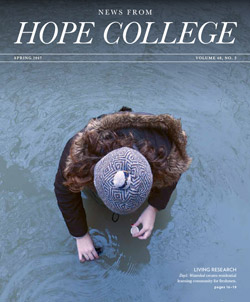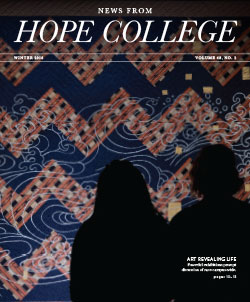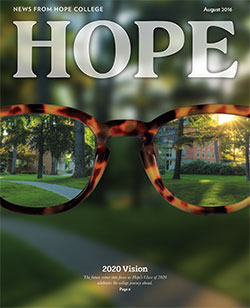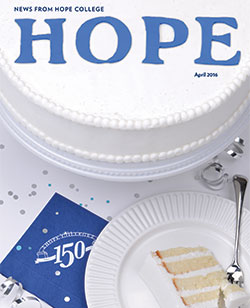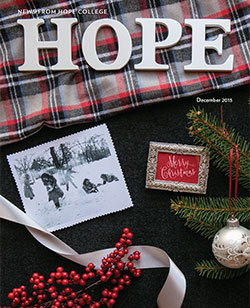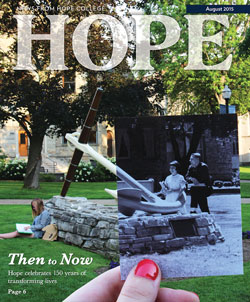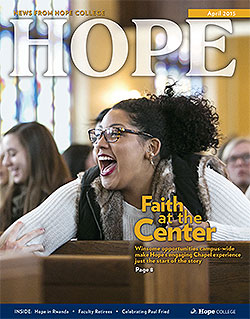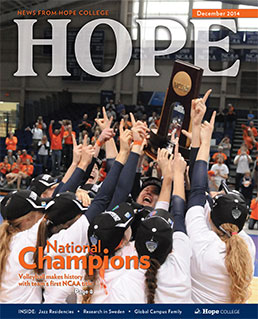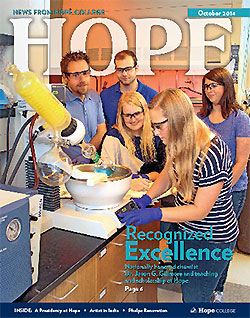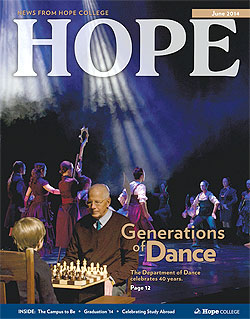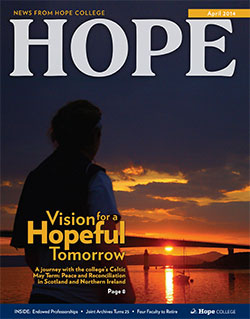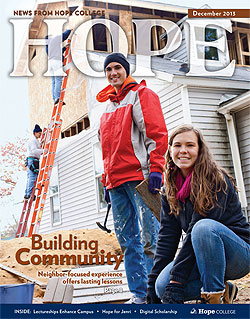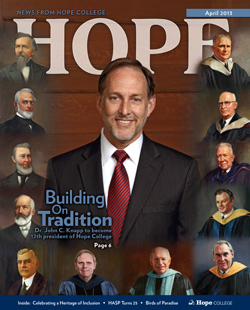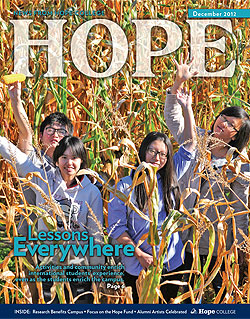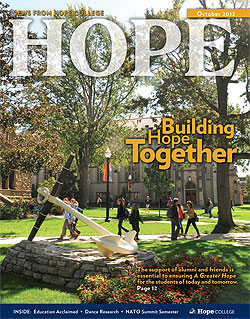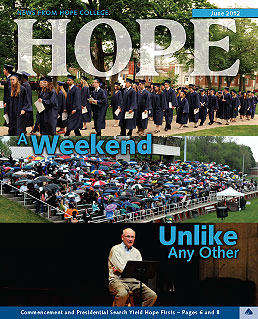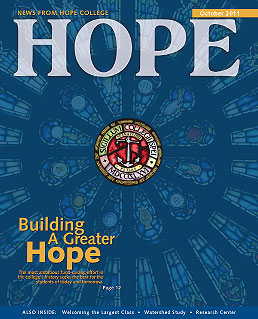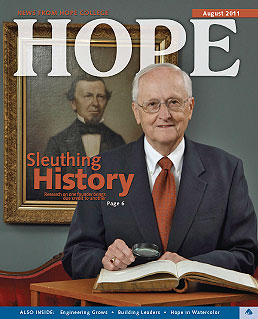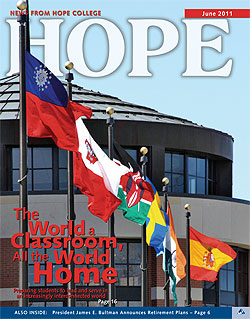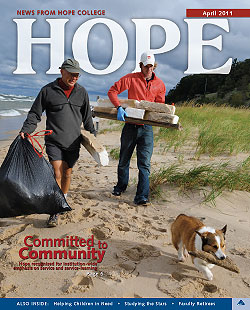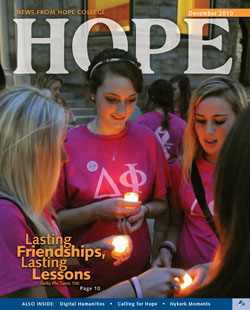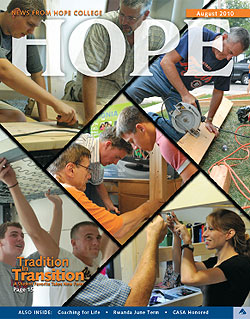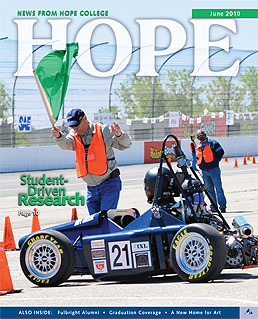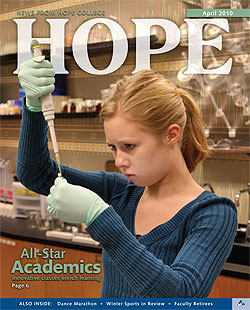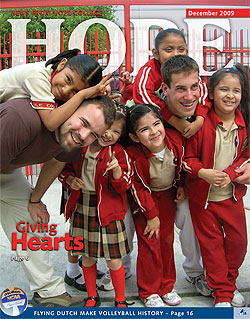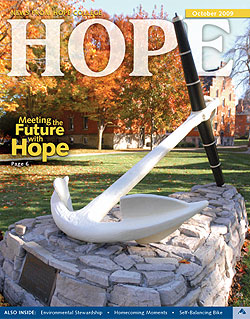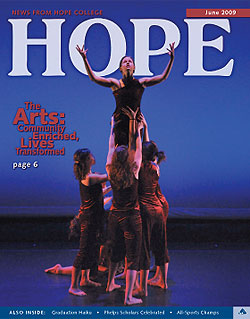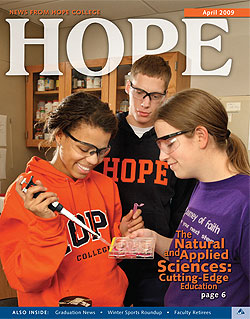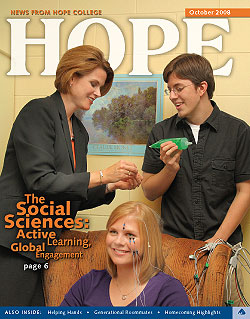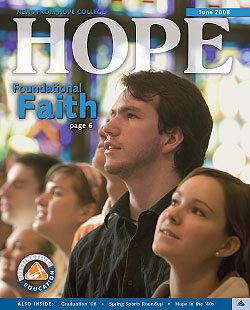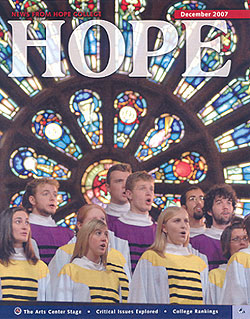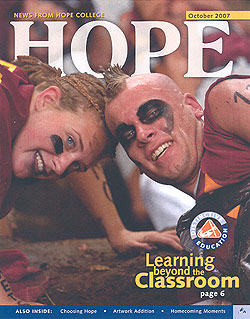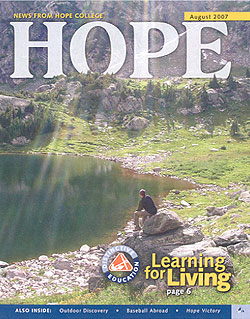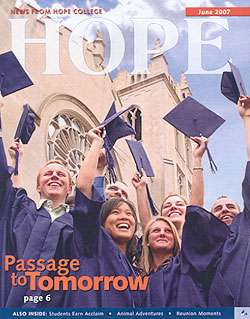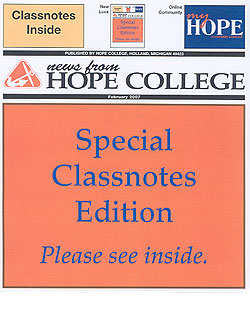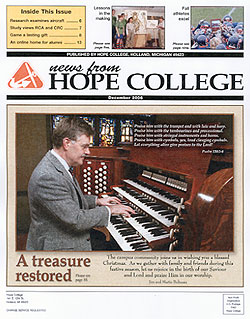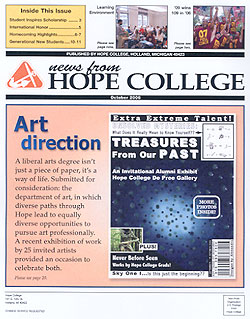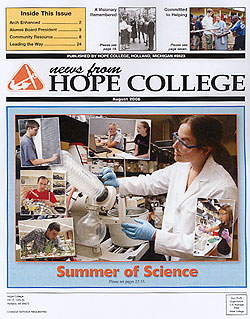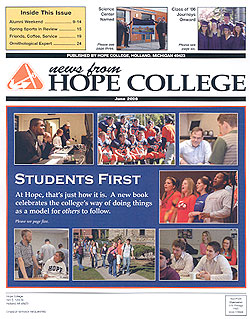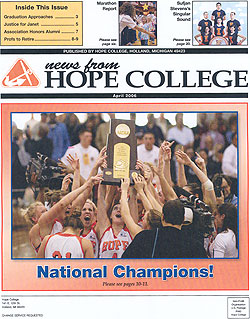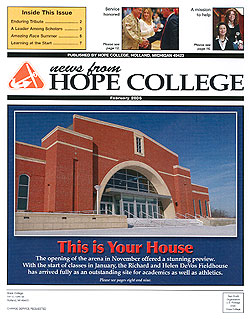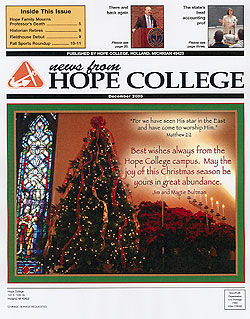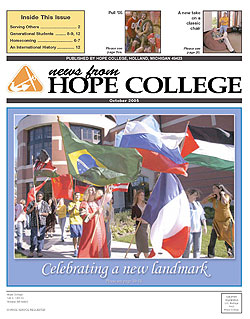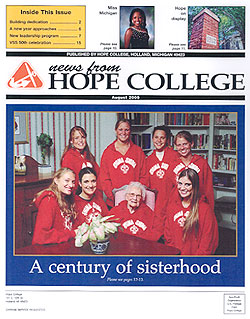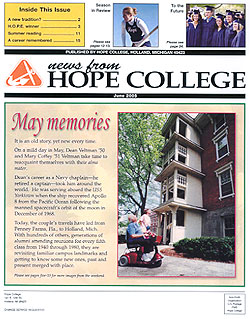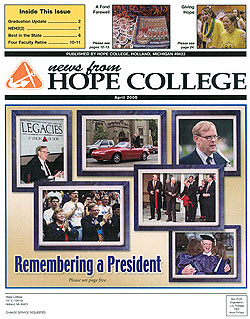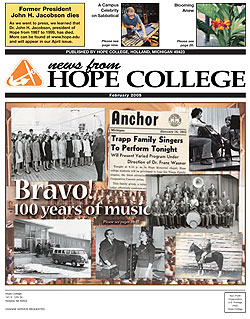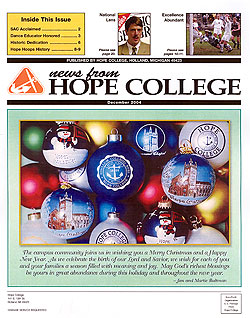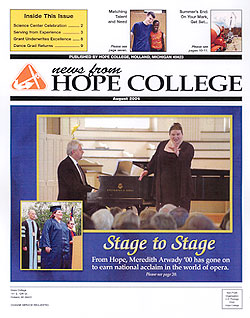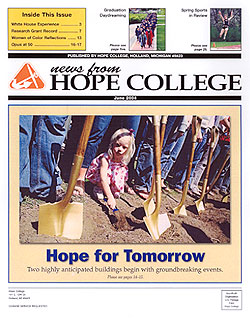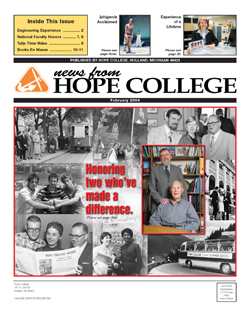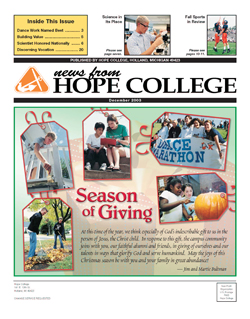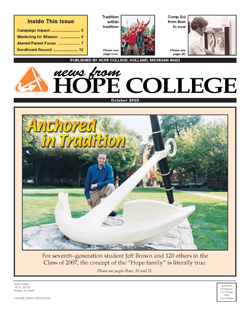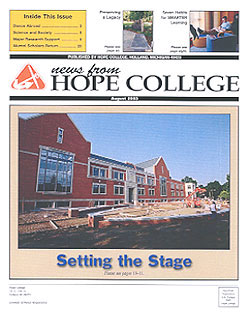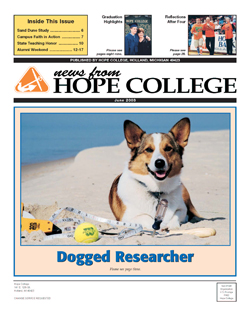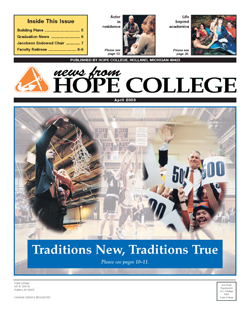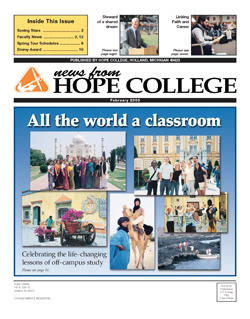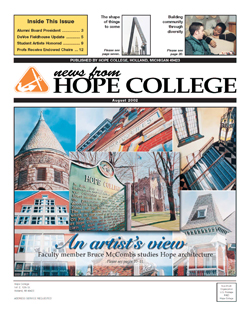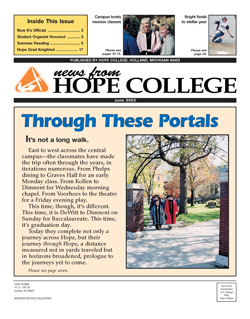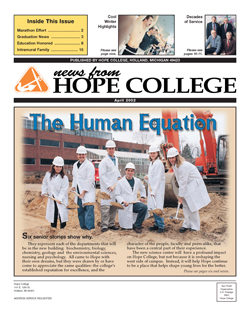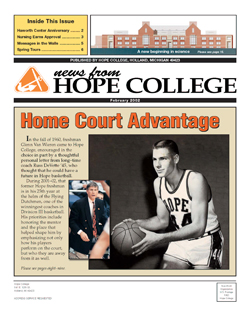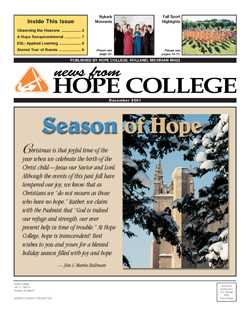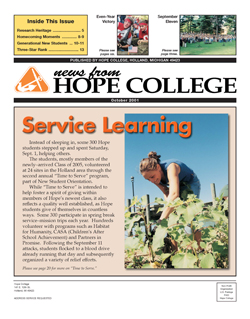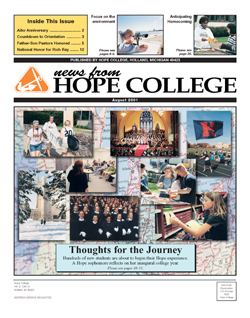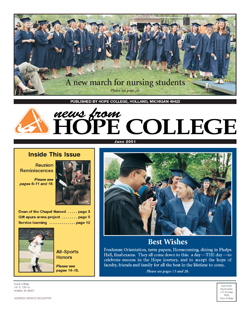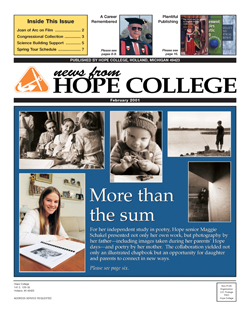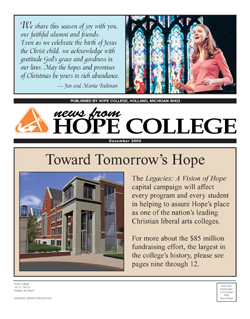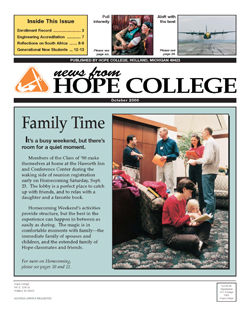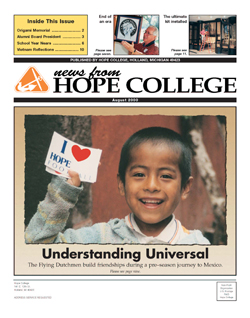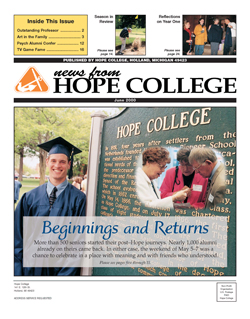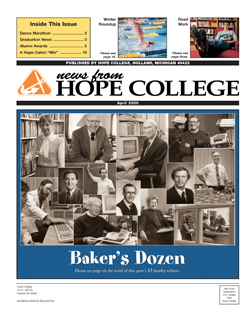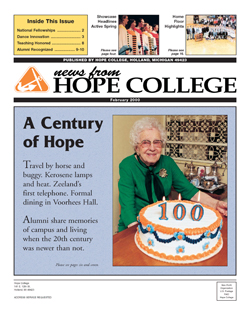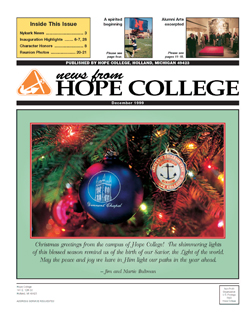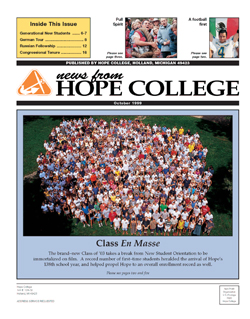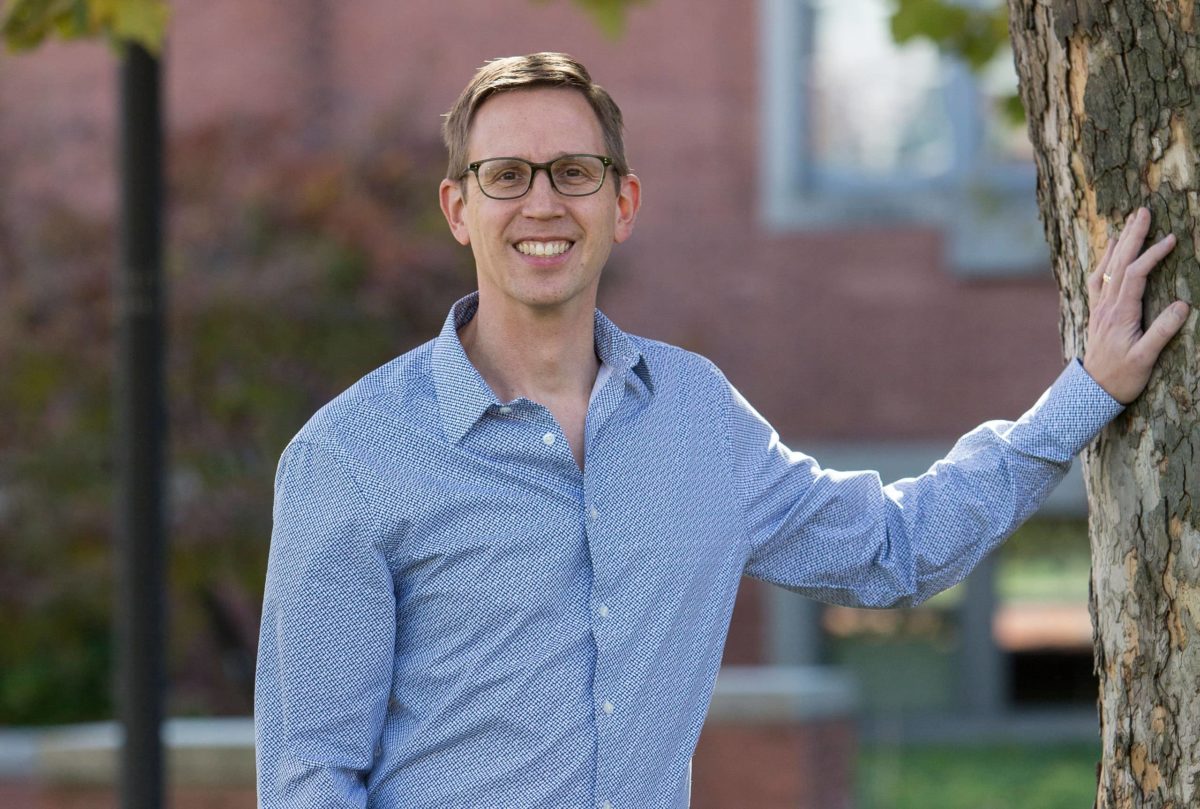Taking Computational Chemistry to the Next Level
Brent Krueger, Ph.D. | Professor of Chemistry
For many, chemistry brings to mind the apparatus: ethereal blue flames, miles of plastic tubing with interestingly-colored chemicals snaking through, and — perhaps above all else — test tubes and beakers of all shapes and sizes. But for Dr. Brent Krueger, chemistry research often occurs on a computer screen, in the form of molecular models.
Computer modeling has brought chemistry into a whole new world of previously invisible associations and understandings. Krueger first immersed himself in this world during his graduate studies, when he employed the modern apparatus to model how energy moves in the process of photosynthesis.
“In chemistry, there are a lot of problems where we’re trying to understand molecular detail — details about molecular shape, or movement at a molecular level, or how the electrons are arranged within a molecule — that are pretty critical to addressing various questions of a chemical nature,” he says.
The practical applications are many and diverse.
“If you want to understand how to make a better solar material, you have to understand, really well, how the electrons are distributed in that material, how they move. And that requires us to do quantum mechanical simulations,” Krueger says.
“In order to understand how you might treat disease, you need to understand how molecules fit together and how they move. A lot of diseases are associated either with molecules joining together that shouldn’t, or molecules not joining together that should. So a lot of the medicines that we use either promote them joining together, or help them to stay apart. Addressing these kinds of questions requires another set of calculations called molecular dynamics simulations.”
Computer modeling makes that nanoscopic connection visible — and adjustable. But it takes a great deal of computer power to do so.
Hope College has been home to a supercomputer (as clusters of linked computers are called) since 2005 when a National Science Foundation (NSF) grant led by Krueger’s Department of Chemistry colleague Dr. Will Polik kicked things off. A second NSF grant in 2010 expanded and updated the supercomputer. Krueger’s big 2020 project, supported by a third ($400,000) NSF grant, was to complete an overhaul of the supercomputer’s operating system, introduce new, updated machines, and consequently vastly increase their operating speed and memory. It has opened the door to previously impossible projects.
“I could give you a list of a dozen or so calculations that either take so long that they weren’t practical — or literally weren’t possible to run on our previous system — that will finish in days on the new cluster,” Krueger says.
For example, a colleague’s atmospheric chemistry research on air pollution was stalled for weeks because that’s how long one complex calculation took on the 2010-era supercomputer. One calculation. Weeks. Krueger estimates that when the new system is fully operational (expected by May 2021), that same calculation will be performed within a day.
A big part of the upgrade — a part that’s been in the making for several years — is a redesigned operating system.
Krueger regularly involves students in his research, and this project is no exception. Zach Snoek ’20 and Anna Prins ’22 worked alongside him for more than three years to help develop the supercomputer’s updated operating system.
“Undergraduates are not only doing the research; they’re also helping develop the infrastructure that other students will use to do research,” Krueger says. “There are a lot of liberal arts schools where research is ‘nice’; it’s not essential. For us, it’s essential. That’s important to me.”
Krueger, Snoek and Prins have worked with staff from Hope’s Center for Computing and Information Technology, especially Brian Slenk, Dan Yonker and Jeff Pestun. Together they’ve rebuilt the Linux operating system on the supercomputer to use “containers.” Software packages typically require particular components of the operating system in order to function. Occasionally, different software packages require different, and incompatible, components, which creates a nightmare for Krueger, Slenk, and others who maintain the cluster. Containers separate software packages into distinct locales, each with its own independent support from the operating system, allowing them to “happily share the same neighborhood on the cluster. The end result is that we’ve got a system that’s now easy to maintain,” Krueger explains.
Why run otherwise incompatible software packages at all? The supercomputer is used for many, many projects, and not only Hope College’s. One of Krueger’s most fulfilling achievements is having established the 17-institution-strong Midwest Undergraduate Computational Chemistry Consortium (MU3C), which began back in 2003. Faculty and students from all the member colleges run projects on the computing cluster housed at Hope, and they gather twice a year, online in the winter and in person (except during pandemics) in the summer, for conferences at which they present their findings.
“I go to a lot of conferences — big American Chemical Society conferences that have many thousands of people. And these are wonderful meetings. But this little MU3C conference — it is my favorite, every year,” Krueger says. “There are always new ideas, reflections on the research that my students are presenting, and I learn some insights about our research that I don’t get at other kinds of meetings.”
The MU3C summer conferences also give Hope students the opportunity to visit a graduate school in the context of their professional work, which gives them a taste of what grad school might be like.
It’s important to Krueger to nurture student researchers, fostering their professional development both in the lab (or computer lab) and through connection to the larger scientific community. Along the way, he also hopes to help them, and others, to understand that computational chemistry is important, relevant work — that physical chemists who work hands-on with substances and lab apparatus are not the only ones making discoveries.
“The projects we’re doing — projects happening in my group and projects enabled by this cluster — are real, publishable, fundable, scientific research. These are not just some fun questions that I’m curious about. I mean, they are fun questions that I’m curious about — but they’re also questions that are addressing an important issue, or making a practical contribution to a device — a thing that could be developed, a piece of knowledge that could be critical to advancing society in the future.”
